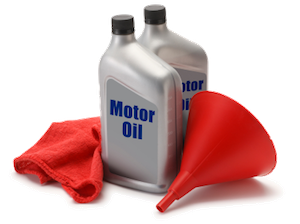home | e-mail | terms of use
oilspecifications.org
Differences Between Passenger Car Motor Oils and Heavy-Duty Motor Oils
Ever wondered about what’s the difference between the motor oil you put in a passenger car’s engine and the other one you put in a heavy-duty truck’s engine? Perhaps it even crossed your mind to use one type of oil in the other type of vehicle? Let us a take a look at the differences between these two types of oils and the two types of engines so we can understand how we need to choose oils for each.
The differences between a light-duty and a heavy-duty engine
Certainly, there are many differences between a passenger car’s engine and the engine of a heavy-duty vehicle, but let us focus on those that have an impact on the motor oil. Both the engine RPM and the specific power (the power per volume) is considerably lower in case of heavy-duty engines. In the meantime, the volume of the required motor oil for HD engines is quite larger than that required for passenger car engines. However, HD diesel engines produce a lot more soot than light-duty vehicle engines, which are usually running on gasoline. But, this is also true even compared to diesel passenger cars.
Last, but not least, heavy-duty engines are usually designed to be lubricated with a 15W40, 10W40 or – in rarer cases – a 5W40 oil, while passenger cars of our age usually need a 5W30, 0W30, 5W20 or 0W20 oil.
What do these mean for the motor oils?
To combat soot and to make oil drain intervals longer (oil drain intervals may reach up to 100 000 miles or 160 000 kms for heavy duty trucks, operated under optimal circumstances) the heavy-duty motor oils contain larger amounts of detergent and dispersant additives than passenger car motor oils do. As said in the previous paragraph, their viscosity grades are also higher so the oils are essentially “thicker” than their PCMO counterparts.
Can I use the heavy-duty motor oil in my car?
No. As explained above, the RPM and the specific power of passenger car engines is higher. This means that it is a lot easier for the oil to get into the combustion chamber and to get burned with the fuel. Since the detergent level is higher, when the oil is burned ash deposits are formed that can stick to the valves. This can even prevent the valve from properly closing. The dispersants used in HD motor oils sometimes are not compatible with the seals used in the passenger car engines so they get damaged. This can lead to oil consumption and engine wear. There is also the issue that a lot of modern passenger cars require special oils. Oils that have the approval of the car manufacturer. Obviously, HD motor oils do not have approvals for passenger car engines and will not meet these special requirements. Finally, as mentioned earlier, the viscosity for HD motor oils is in many cases different than that of the passenger car motor oils.
What about using a passenger car motor oil in a heavy-duty truck?
This will not work either. After reading the paragraphs from above, you now know that heavy-duty engines produce more soot and the oils designed for those engines need to have higher levels of detergent additives. A passenger car motor oil would not be able to keep a heavy-duty engine clean and it would probably be too “thin” to protect it from the wear it is exposed to.
Are there any exceptions?
Few things in life are without exceptions and certainly this is not one of them. There are some so called mixed-fleet oils that have some basic heavy-duty and light-duty approvals as well. What’s the catch? These are usually pretty simple oils that usually meet the demands of cars and trucks made in the ‘90s or before when HD engines were cleaner in the inside (now they are dirtier inside, because emission standards require manufacturers to use EGR and such, to make the exhaust gas cleaner) and passenger cars were a lot less demanding in relation to the motor oil. They are usually not suitable for newer cars or trucks.


